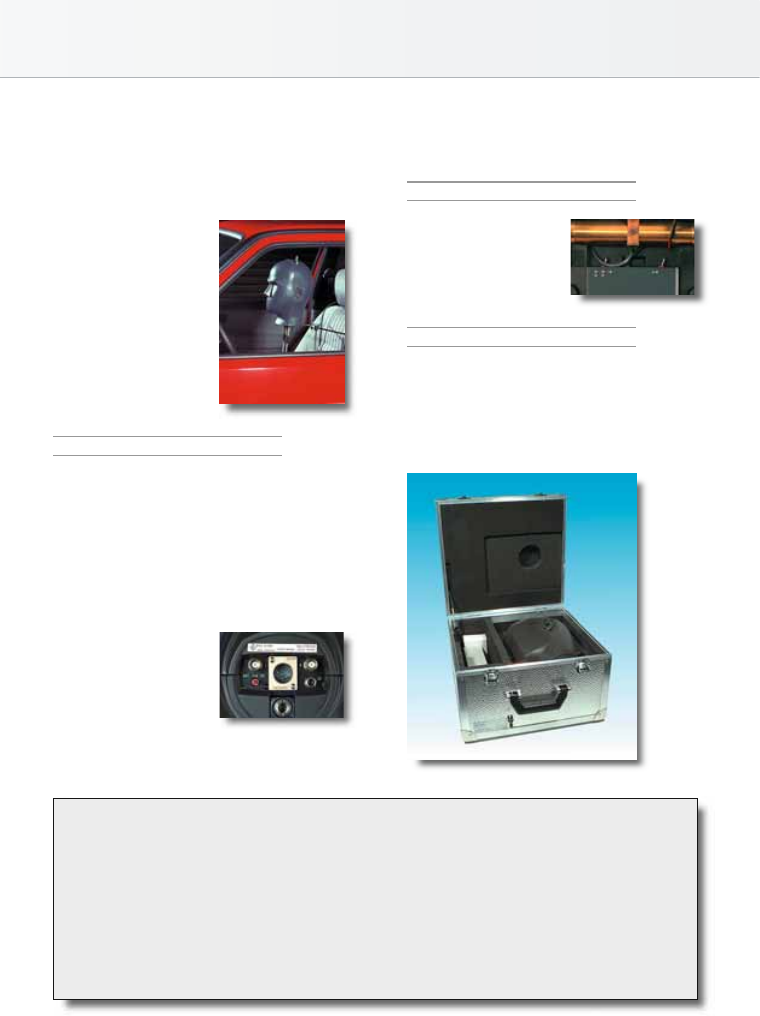
101
KU 100
The KU100 dummy head is just as easy to
use during creative radio drama productions,
and music recordings where
the room acoustics should be
recorded at the same time.
The dummy head is also con-
tributed essentially as an im-
portant tool to preserve natural
sounds of all kinds.
In addition, the dummy head
is frequently used to examine
and document the influence of
noise in industrial applications
at various working places under
realistic conditions.
Electrical features
The KU100 uses transformerless circuitry
with the advantage of high output capability,
fast transient response, and extremely low self
noise. The usual output transformers are re-
placed by electronic circuits. As with traditional
transformers, this technique ensures good
common mode rejection, and prevents RF in-
terference, that may influence the balanced au-
dio signals.
The dummy head provides balanced (XLR)
and unbalanced (BNC) out-
puts. It can be powered in
three different modes:
from an external P48 phantom
power supply,
with batteries as part of the in-
ternal battery supply,
or from an external AC mains supply (includ-
ed with the system).
Technical Data
Acoustical operating principle................................................Pressure transducer
Directional pattern.............................................................................................................. Ear
Frequency range..................................................................................... 20 Hz...20 kHz
Sensitivity at 1 kHz into 1 kohm...............................................................20 mV/Pa
Rated impedance..............................................................................50 ohms balanced
200ohms unbalanced
Rated load impedance.................................................................................1000 ohms
Signal-to-noise ratio, CCIR
1)
(rel. 94dB SPL)..............................................65 dB
Signal-to-noise ratio, A-weighted
1)
(rel. 94dB SPL)...............................78 dB
Equivalent noise level, CCIR
1)
.................................................................................29 dB
Equivalent noise level, A-weighted
1)
............................................................16 dB-A
Maximum SPL for THD 0.5%
2)
.....................................................................135 dB
Maximum SPL for THD 0.5% with preattenuation
2)
...................... 145 dB
Maximum output voltage...............................................................................1950mV
Dynamic range of the microphone amplifier (A-weighted).........119 dB
Supply voltage.......................................200...240V / 48V±4V / 6x1.5V
Current consumption.........................................................................................2 x 2 mA
Matching connector..............................................................................XLR3F / XLR5F
Weight............................................................................................................................3500g
Height...........................................................................................................................280mm
Width.............................................................................................................................180mm
Depth............................................................................................................................ 220 mm
Filter and attenuation
A 10dB switch inside the
head attenuates the sensitivi-
ty. A second switch selects
the cutoff frequency of the
high-pass filter to be either
linear, 40 Hz, or 150 Hz.
Delivery range
The KU 100 comes in a robust aluminum car-
rying case, together with an external power sup-
ply unit, a 5-pin XLR cable, and an adapter ca-
ble that splits the 5-pinXLR output into two
3-pin XLRconnectors.
1)
according to IEC 60268-1; CCIR-weighting acccording to CCIR 468-3, quasi peak; A-weighting according to IEC 61672-1, RMS
2)
measured as equivalent el. input signal
3)
P48, IEC61938


















